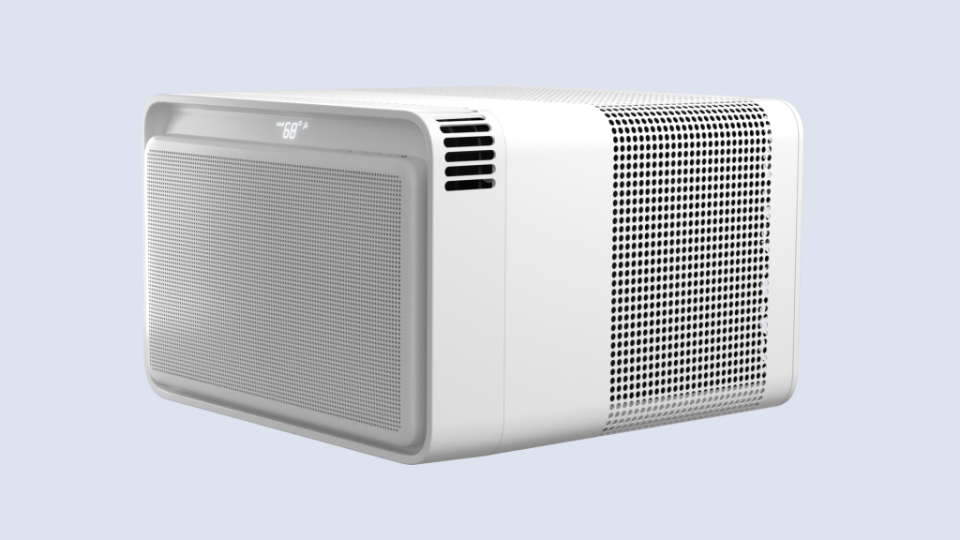The startup that made air conditioning units look cool
This is an installment of Startup Year One, a special series of interviews with founders about the major lessons they have learned in the immediate aftermath of their businesses’ first year of operation.
Summer seems like it would be a primetime to debut a brand new air conditioner, and it is—but it comes with challenges when your fancy AC unit is a hot commodity.
Windmill first launched July 2020, reimagining air conditioning with a more modern design, state-of-the-art technology, and a better customer experience. The first product is a powerful, eco-friendly, and quiet window air conditioning unit that blends right into your home decor and delivers cleaner, healthier air.
Windmill's AC unit was built from scratch to deliver a more powerful and efficient machine that prioritizes comfort, convenience, and style—without breaking the bank. To bring a breath of fresh air to the industry and solve its pain points, Windmill tapped experts with 60 years of AC experience, marrying more than half a century of learnings with a modern approach to consumer convenience and tech-forward innovation.
Going into its second summer, Windmill has since generated a waitlist of more than 10,000 customers amassed from its successful inaugural launch less than a year ago. Windmill's AC units retail for $395 with a 30-day free trial, free returns, and a one-year limited warranty.
Fortune recently spoke with cofounder and CEO Mike Mayer about Windmill's whirlwind of a year and plans for the summer.

The following interview has been condensed and lightly edited for clarity.
Fortune: Can you share a bit about your professional background prior to launching Windmill?
Mayer: I've been passionately involved in early-stage startups and tech companies for years. Before Windmill, I spent over five years building marketing programs for venture-backed startups and growth-stage tech companies. I had the privilege of being a part of the inaugural class of Venture for America (VFA), which helps stimulate entrepreneurship and job creation in developing U.S. cities. (Through VFA, I co-founded a design thinking nonprofit for kids, Startup Effect, in New Orleans and Detroit.) I graduated from the Wharton School at the University of Pennsylvania, and have long admired the entrepreneurs who have been able to reimagine everyday objects by solving real pain points. while creating an authentic, customer-first brand along the way.
![Windmill's products are sold directly through its e-commerce channel, and recently started selling with [hotlink]Home Depot[/hotlink] online this past spring.](https://s.yimg.com/ny/api/res/1.2/0drEC03xj07KhJPXMGGL5Q--/YXBwaWQ9aGlnaGxhbmRlcjt3PTk2MDtoPTU0MA--/https://media.zenfs.com/en/fortune_175/da6b8957977f63a79d1ec592ee205dd5)
Air conditioning units aren't usually known for being aesthetically pleasing, nor do they seem like the most obvious or sexiest choice for a startup looking to sell a hot new gadget. What inspired you to launch Windmill?
That’s exactly what attracted us to this industry! To us, the unsexiness is
sexy.
In 2018 my brother and I had that "a-ha!" moment during a brutal apartment move on a sweltering hot, New York summer day. Our love-hate (mostly hate) relationship with the AC had festered over decades of city living: countless moves and hundreds of dollars spent on lackluster cooling products, from fans to window units.
Danny and I were in a bind during that move in 2018, so we called up our longtime friend (and now, co-founder) [hotlink]Ryan[/hotlink] Figlia, whose family business has been manufacturing, installing, and servicing AC in New York City for decades. After he and his technicians came and hooked Danny up with new units, our wheels started turning. What if we could give everyone that same "I know a guy," five-star experience, and reimagine the design of the machine itself? A couple months later, Ryan and I were boarding a plane to share our vision with our expert manufacturing partners.

What went into the design and development process for Windmill's AC units? Aside from being better looking than the usual boxes sitting in our windows, how are they more efficient? What pain points do they resolve?
The reason most window ACs in the market look the same today is because they’re manufactured in only a handful of factories in the same region of China. Even some of the newer models are just re-skinned or re-branded versions of the same old “box.” Anyone can buy an old clunker, put lipstick on a pig, and rebrand it as something cool. We leveraged a very unique and longstanding relationship with a manufacturer to actually build a better unit from scratch. There were countless roadblocks and hurdles, over 9,000 hours of prototyping, and many sleepless nights before we got to our first fully operational machine.
Because we went this route, we were able to pre-assemble the installation kit, making setup a breeze, which tends to be one of the first pain points for customers. Provided in the kit are easy-to-assemble, double-insulating side panels which keep hot air (and bugs, drafts, etc.) out and cool air in. We designed an internal air ramp and top vents that blow air up and out into the room at the perfect angle for better, more efficient cooling. Unlike any unit on the market, our AC features double-filtration with activated carbon filters that purify as the AC cools. And, because we love sleep, our LED display fades after 60 seconds so you don’t have blue light shining in your room at night.
From an eco perspective, our units use a refrigerant (R32) that has 68% less global warming potential than the next most common alternative (410a) and connects to an app so you can turn them off remotely (and save energy). We also help offset the carbon footprint of each Windmill AC purchased by investing in deforestation protection projects around the world.

Since launching last summer, Windmill has already generated a wait list of more than 10,000 eager buyers. What kind of moves or changes do you have to make to scale your business in response? Do you anticipate being able to meet this demand by the time summer 2021 is underway and temperatures are soaring?
We recently raised $3 million in seed funding to scale production and infrastructure to meet this forecasted spike in demand. In fact, in just the past month or so, we’ve grown over 1,000% compared to all of last year. In many ways, the large waitlist we generated last year prepared us for the summer ahead; we got a glimpse of just how badly people want better, more modern air and cooling products and were able to prepare accordingly this past winter.
We also had the time, after 2020’s successful launch, to execute on our distribution plan and make Windmill as accessible as possible. In addition to selling direct-to-consumer on Windmill's website, we inked new partnerships this year with Home Depot (live online) and PC Richard & Son (coming later this spring in stores and online), with more exciting retail announcements to come.
Looking forward, where do you want to see Windmill in five years?
We initially started Windmill to tackle the many pain points in AC and provide a better customer experience across the board. But since launch, a lot has changed (and continues to change). Global warming is causing some of the hottest summers on record, wildfires are destroying air quality out west, and the pandemic has forced us like nothing before to focus on the health of our home and indoor air quality. All the while, consumers are demanding more environmentally responsible products and services. These issues and trends are not going away, and Windmill is rising to meet this crucial moment with a heightened mission: to reimagine air care for the 21st century.
In five years, we’ll be well past air conditioning. Windmill will be helping people breathe cleaner air in more comfortable environments, with advanced technology and eco-friendly practices.
This story was originally featured on Fortune.com
